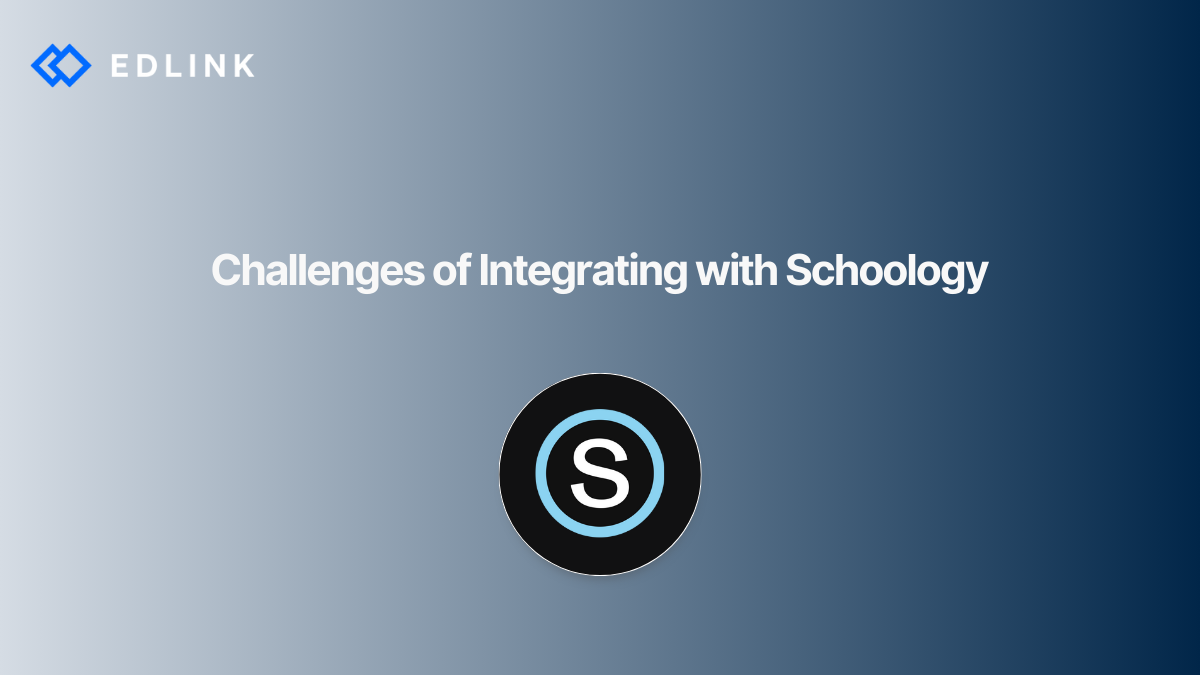Due to its 2019 acquisition by PowerSchool and subsequent state-wide adoptions, Schoology has greatly expanded its footprint in the K-12 LMS market. This has led to an increase of districts requesting that their vendors integrate with their Schoology environments. Many developers are new to Schoology integration and the platform does have its quirks. In this article, we'll discuss some the challenges of integrating with Schoology.
Schoology Supports Custom Domains for Schools
Schoology is a cloud-hosted environment. Users can log into Schoology with a set of credentials directly through schoology.com. However, districts and schools that use Schoology are also permitted to setup a custom domain that their students and faculty are directed to when signing into Schoology. This differs from Canvas, where each school has it's own self-hosted environment and Canvas domain, and from Google Classroom, which is cloud-hosted and has a universal sign-in page for every user.
When directing your users to sign into your app with your Schoology credentials, your app should direct them to the correct Schoology log-in screen. The teachers and students of schools that use custom Schoology domains are generally not accustomed to login screen at Schoology.com and may not know how to navigate themselves to their school's custom domain through Schoology's portal.
OAuth 1.0
Whereas most other modern platforms online have transitioned to using OAuth 2.0 for authenticating users, Schoology still requires authentication through OAuth 1.0. The newer version of the OAuth standard is considered to be more secure and easier for developers to implement. OAuth 1.0 requires developers to understand how to implement cryptographic signatures. Because OAuth 1.0 is not at widely used as it was a decade ago, it can be challenging for developers to learn how to implement it.
These three challenges are just a subset of some of the issues you could run into while integrating with Schoology. LMS integrations are usually not as straight-forward as they might seem at first. In fact, you should take into accounts the differences and quirks of each platform when you're building our your own integrations.
If you're looking for some help in getting your app integrated with Schoology, we'd love to chat! Our team at Edlink has worked with several publishers and developers to get their platforms integrated with Schoology. In fact, the Edlink API can also get your app connected to other LMSs, including Canvas, Blackboard, Microsoft Teams, and others. To learn more about what we do and how we can help, please give us a shout at accounts@ed.link or at our support page.
Learning Tools Interoperability® (LTI®) is a trademark of the IMS Global Learning Consortium, Inc. (www.imsglobal.org). Edlink LTI integrations are not certified by the IMS Global Learning Consortium, Inc.

